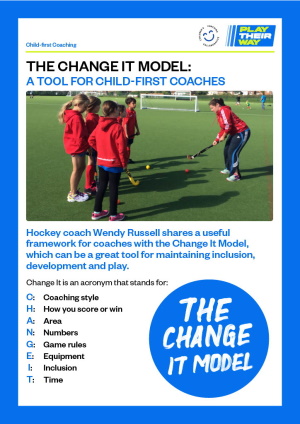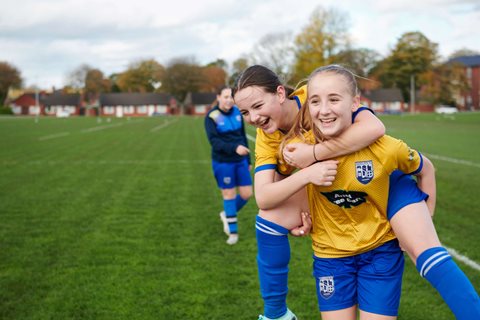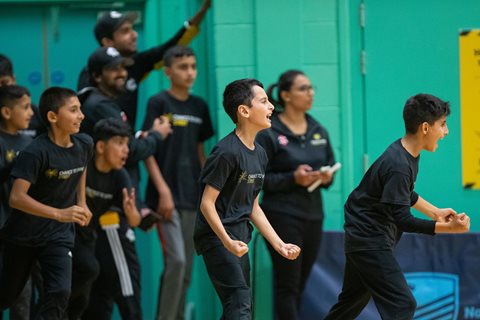Our cookies
We use essential cookies to make our website work smoothly for you. To make sure we're always improving, we'd like to use analytics to track how people use the site. We won't set non-essential cookies unless you give us permission. You can find more information about all the cookies we use in our Privacy and Cookie Policy.
Some cookies are a must for our website to function properly. If you turn off essential cookies, it may affect how you experience our site.
The non-essential cookies we use help us understand how you use our website and make improvements to enhance your experience.
The Ultimate Guide to Coaching Hockey to Children: Fun and Games for All
A guide to delivering child-first coaching sessions in hockey. Wendy Russell is a PE teacher and a senior coach at Brighton & Hove Hockey Club. She shares some practical advice and fun games to help coaches put children and young people at the centre of every session.
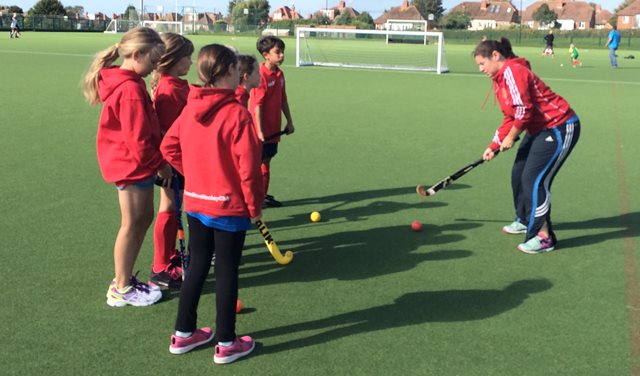
Included in this article:
- CHOICE: Hockey practice must be fun and engaging
- Ideas for creating energy, enthusiasm, and enjoyment
- VOICE: Putting the child’s voice front and centre to maximise participation
- VOICE: Why it is important to embrace failure
- CHOICE: Give children a choice to shape how they play
- Creating an inclusive hockey environment
- CHOICE: The role of the facilitator and the art of questioning
- Exploring the principle of developing better performers and better people
by Blake Richardson
Children love to play, embrace and express themselves, and choose to play a sport because they want to have fun.
This article outlines principles and activities to help coaches create environments that encourage and enthuse children.
To the coaches who might like the sound of their own voice a little too much, remember the words of Elvis Presley: “A little less conversation, a little more action – please.”
The real art of conversation lies in giving children greater autonomy and control over their development by learning to listen to their voice.
Training should put more of an emphasis on learning through self-discovery rather than breaking down creativity by verbal dictation.
Conversations are still important, but need to be a two-way dialogue, with a strong focus on telling less and asking more. By suppressing the urge to prescribe solutions, you support the child by allowing them to explore and find their own solutions through co-designed games and activities.
You will never see hockey coach Wendy Russell controlling the learning environment at Blatchington Mill School – which doubles as the headquarters for Brighton & Hove Hockey Club – but you will see her participants fully engaged, because, in keeping with her child-first philosophy, she understands that children want a little less interference, a little more independence please.
I think grass-roots coaches and teachers are the most important role models when it comes to inspiring people to want to get involved in sport, and to keep a smile on their faces when they are taking part,” says Wendy.
“Whenever I see someone develop a new skill or grow in confidence, the smile that lights up their face, this inspires me, knowing I have helped them believe in themselves.”
Wendy shares the following tips. Use them to create a fun learning environment at your hockey club.
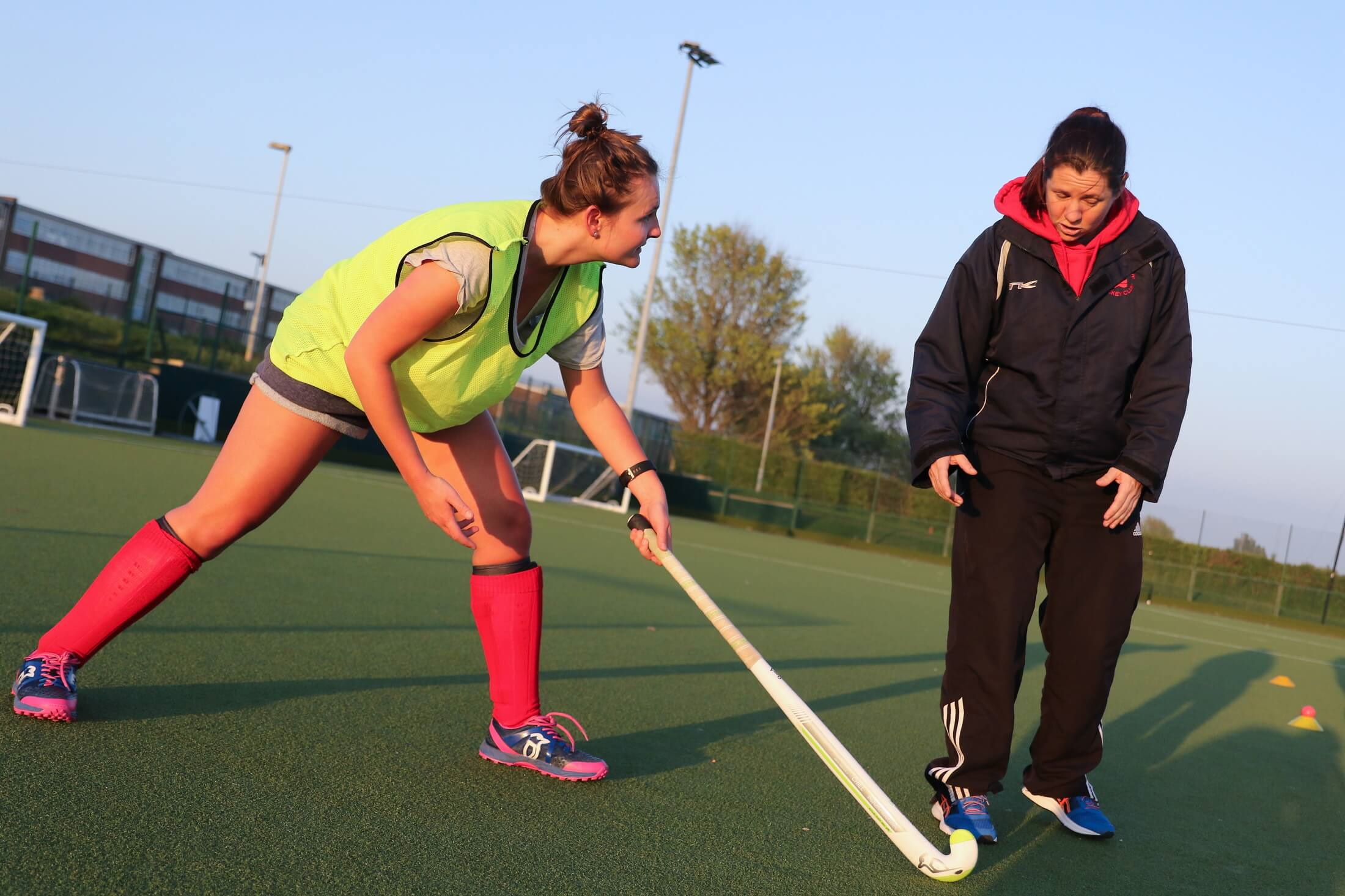
Hockey practice must be fun and engaging
Wendy’s Top Tip:
When coaching hockey to kids, practice must be fun and engaging, not only for the player but for you as a coach. I constantly challenge myself to ask the question: What makes a child come back? Let's be honest, no one enjoys being out in the cold and rain.
In every sense of the word, children do what ‘moves’ them.
“If kids don’t like something, or they are losing interest, they are very honest and will tell you – “I’m bored!” or “this is boring!” says Wendy.
Try paying attention to a child’s body language, and to whether they are engaged or disengaged. The sight of a disengaged child must be avoided at all costs. An inflexible, formal approach – such as a succession of skills drills, is a quick way of losing their interest and focus. You will notice that their energy and enthusiasm will fall shortly after they lose interest.
Children absolutely love playing games, so make your sessions game-focused rather than performance-focused. You can make anything game-like if you think creatively.
Coaches may believe it is entirely down to them to drive the fun; but the players will drive it if you give them the chance.
In the first ten minutes of a session, Wendy allows the children to just play around with the ball and have fun, make their own rules, and use their imagination.
She says older age groups tend to just want to smash the ball into a goal. The younger ones, meanwhile, need some basic direction to begin with to get their creative juices flowing, but they will be entertaining themselves in no time.
“I will just throw a kit bag on the floor and challenge them to dribble round it. Before you know it they will be changing direction, lifting the ball over the bag and they might use their imagination further and open the zip and see if they can chip the ball in the bag.”
Energy, enthusiasm, and enjoyment
Wendy’s Top Tip:
Pass on knowledge with energy and enthusiasm. It is infectious.
The most important element of entering a session is the attitude you bring to the practice. When you coach children, they do not want to feel like they are being dictated to. If you bring that attitude into the session, you will find many of them will switch off.
Finding joyfulness in coaching is crucial because what you project is what you get back. If you are not enjoying yourself then you are not creating an environment that children want to be in.
Wendy says she loves thinking up wacky names for games and the children are only too eager to join in the fun. Every activity she does with the children she coaches has its own name. This helps the children remember the activity, which considering Wendy’s extensive repertoire and the number of opportunities they get to pick a game, is a handy memory hack.
Here are two of Wendy’s crazy name games.
Swamp monster:
Two rows of four players line up on either side of the square, with the swamp monster in the middle. The players hit the ball to each other across the swamp, and the swamp monster tries to intercept it. “The skill-based activity is learning to strike a hockey ball, but to the children, it is simply a game of swamp monster.”
Shark Island:
The shark swims around the small islands (of players), poised to attack when a player hops from island to island. If you are dispossessed of the ball, it means you have been gobbled up by the shark.
Visual imagery is a powerful engagement tool when it comes to coaching hockey to kids. The children may be oblivious, but it helps set in motion a positive chain reaction: imagery influences emotions, emotions drive thoughts, thoughts drive behaviour, and behaviour drives performance.
In the article Gaining a Psychological Edge, one of the country’s most respected sports coaches, Frank Dick, urges coaches to find innovative ways to apply the use of imagery, metaphors and storytelling in their coaching: “If you can do that, you can change how people think,” says Frank.
Put the child’s voice front and centre to maximise participation
Wendy’s Top Tip:
Listen to your players. They will tell you so much! From aspects they enjoy, to things that might not have worked for them. They are not all the same.
Active listening helps foster a safe environment where children can flourish and is pivotal in helping you to establish a close connection with your group of players. This is integral to earning their trust and building rapport – the foundation blocks for progress and growth.
One of the guiding principles of the Coaching Children’s Collaborative is based on the fundamental right of every child to be heard. Administering praise by celebrating children’s small successes is one way of letting children know that they, and their opinions, are valued.
A child’s gut reaction when they hear you discreetly call them over is to think, ‘oh no, what have I done wrong.’
Now consider the following conversation, which is a staple of Wendy’s sessions:
Wendy: That was really good. What do you think was good about it?
Player: It was an accurate pass.
Wendy: Exactly, how did you make sure it was an accurate pass?
Player: By making sure the ball was in the right place when I started the action.
Wendy: That's really good to hear you are thinking about that. Now, if you did that again, is there anything you might change to make it even better?
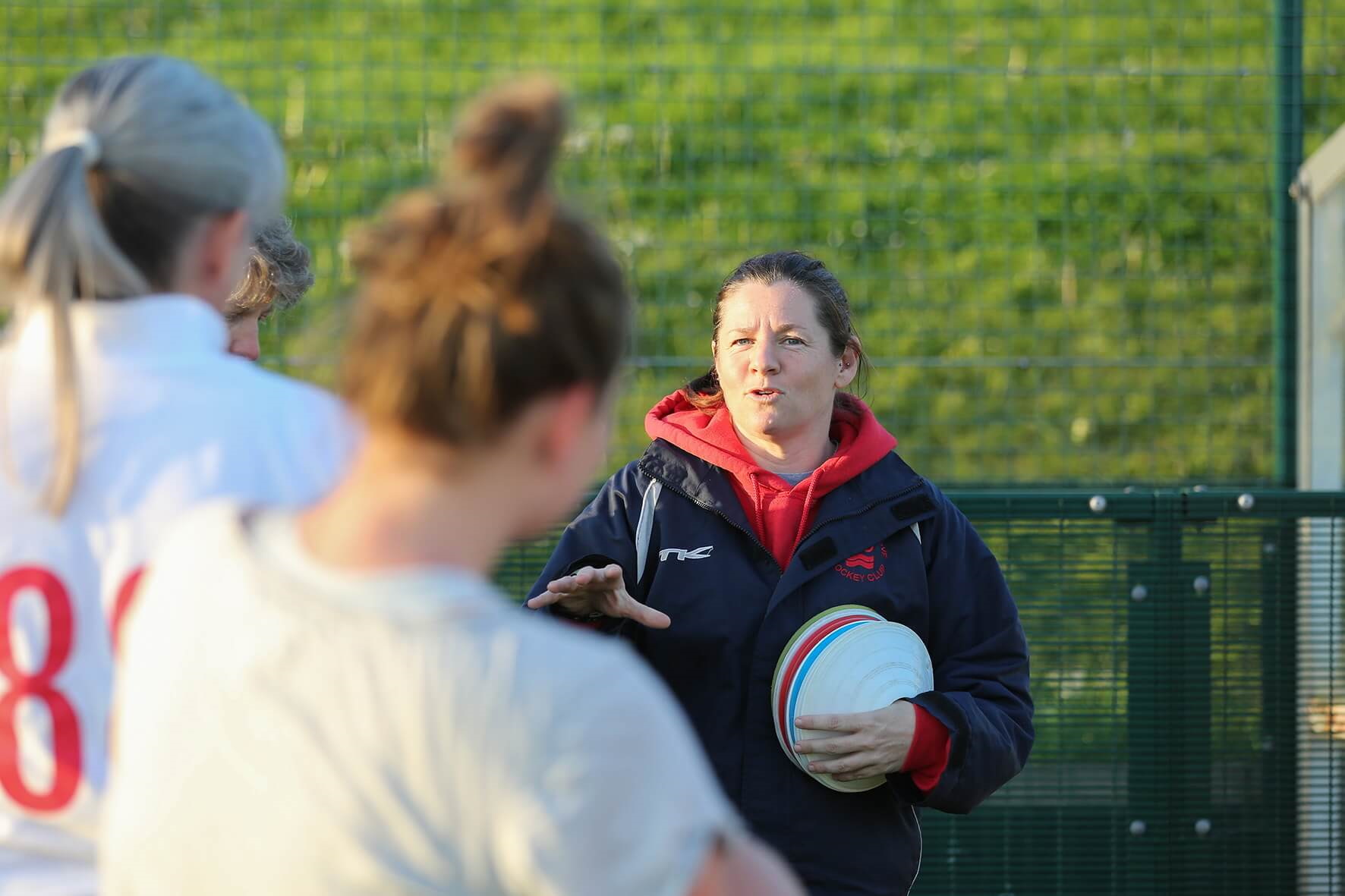
Acknowledging that you see them and that you are there to help them improve will encourage children to experiment and take risks. Children have a voice to express themselves and grow in confidence when they know the coach has their best interests at heart.
They can then feel empowered in the activity, and in future activities, to suggest how to change things.
Wendy builds and supports this empowerment by asking simple questions to a child, such as what their favourite pizza topping is, or what has made them smile today. This all builds towards forming an effective rapport with them, which keeps the open communication channels between the player and coach.
The Coaching Compass
Start your child-first coaching journey with the Coaching Compass! Simply answer a few quick-fire questions to create your unique child-first coaching profile.
Chart Your Course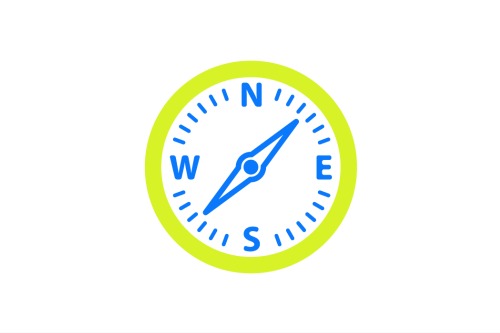
Why it is important to embrace failure
Wendy’s Top Tip:
Embrace failure as much as success. This will help your athletes learn and improve.
Coaches should be given an open platform to be fearless and not be frightened to make mistakes. It is the same for your participants. The faster they make a mistake, the quicker they learn!
In team sports it is a very fluid environment – with a range of people from different cultural backgrounds, ages, levels of intellect and sporting experience – and Wendy says to be prepared for the fact that not every child will understand what is being asked of them straight away. It is the job of the hockey coach to layer and scaffold the questions and learning environment, so that everyone can access the activity.
“If the message hasn’t landed, you can simplify the language or bounce it onto someone else, who will serve as a role model to help others develop their understanding,” says Wendy.
The important point to remember is that if children are heard, they will feel safe. And if they feel safe in their environment they will not be disheartened when they make a mistake.
If I say ‘fail’ to my players, they know that from me that means it is their first attempt in learning.”
Give children a choice to shape how they play
In the last session of every month, Wendy will ask the children what they want to work on as a group the following week.
She lays some pictures on the floor representing different areas for development. For example: defending, attacking, goalscoring, passing, dribbling.
The players put a ball next to the practice focus of their choice.
With the older age group, Wendy may have a deeper conversation around what they want to work on and why.
If you are lucky enough to have multiple coaches at your session, then you can give children an even greater choice and ownership of their learning journey. So, with three coaches, you could divide the session up so that each coach works on a different practice focus and every child gets to develop the skill of their choice.
If that isn’t possible, maybe give some of the children who missed out on their first choice the opportunity to choose the game that the session finishes on – so their voice is still being listened to – whilst the others get to choose a rule to add to the game.
Create an inclusive hockey environment
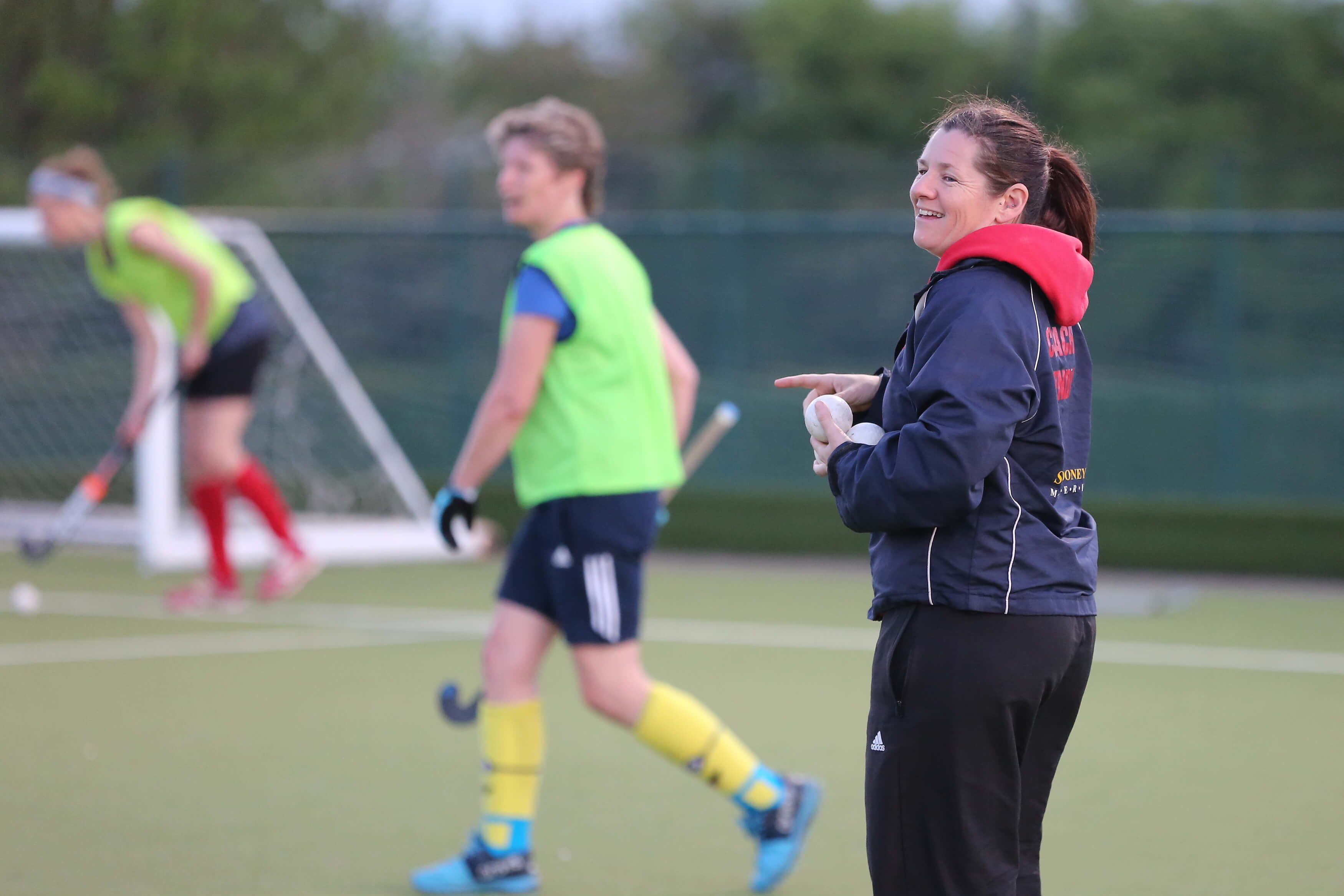
Wendy’s Top Tip:
Create and foster an environment for everyone – a love for being active and an eagerness to learn – so each person can fulfil their potential.
The rate of development may be different in every child but the opportunity to develop is the same for every child.
A coach is there to facilitate children’s innovation by guiding, supporting and inspiring them and ensuring everyone in the group is given an opportunity to play and learn.
Wendy uses the ‘CHANGE IT’ model when assessing a game or activity to ensure it is fun, safe, challenging, engaging and, just as importantly, inclusive.
Change It is an acronym that stands for:
C: Coaching style
H: How you score or win
A: Area
N: Numbers
G: Game rules
E: Equipment
I: Inclusion
T: Time
Wendy uses the simple example of a game of 1vs1 to illustrate the Change It concept.
Player 1 has to keep the ball away from player 2.
“When the kids pair up, they will usually choose their friend, and they may have different abilities,” says Wendy.
“I will vary the size of the playing area to ensure both players are engaged and challenged.
“I will ask: ‘What size space do you want as a group of two?’. It’s getting them to have the conversation and to choose amongst themselves. ‘We are going to start with this space’. Get them to play for a few moments before pausing the game.”
Wendy says the conversation will pan out something like this:
Wendy: What is the objective of this activity?
Players: To keep the ball.
Wendy: How do we know we’ve been successful?
Players: Player 1 has kept the ball for a long time.
Wendy: What’s a long time? (Get them to come up with success criteria)
Players: A minute.
They then play again to see if they have achieved the success criteria. This is then followed by a conversation about how they managed to achieve this.
Then get them to switch roles. Did player 2 keep possession for a minute? Get them to reflect and discover how, by making changes to the playing area (bigger space to make it easier to keep possession, smaller space to make it harder) they can ensure both are successfully meeting the success criteria.
You can change many areas of the CHANGE IT Model, however, make sure not to dial up or down too many parts.
Change-It Model
Download our two-page guide to using this effective tool for child-first coaches and print out for future use.
DOWNLOAD PDF
The role of the facilitator and the art of questioning
Wendy has shown that by challenging players to think about what they are doing and why and using questions and prompts to enable them to make simple variations to games to make it easier or harder, the learning outcomes can be met for every child.
The game is used as the teacher, with conditions imposed that expose athletes to opportunities for learning by developing their understanding of tactical concepts.
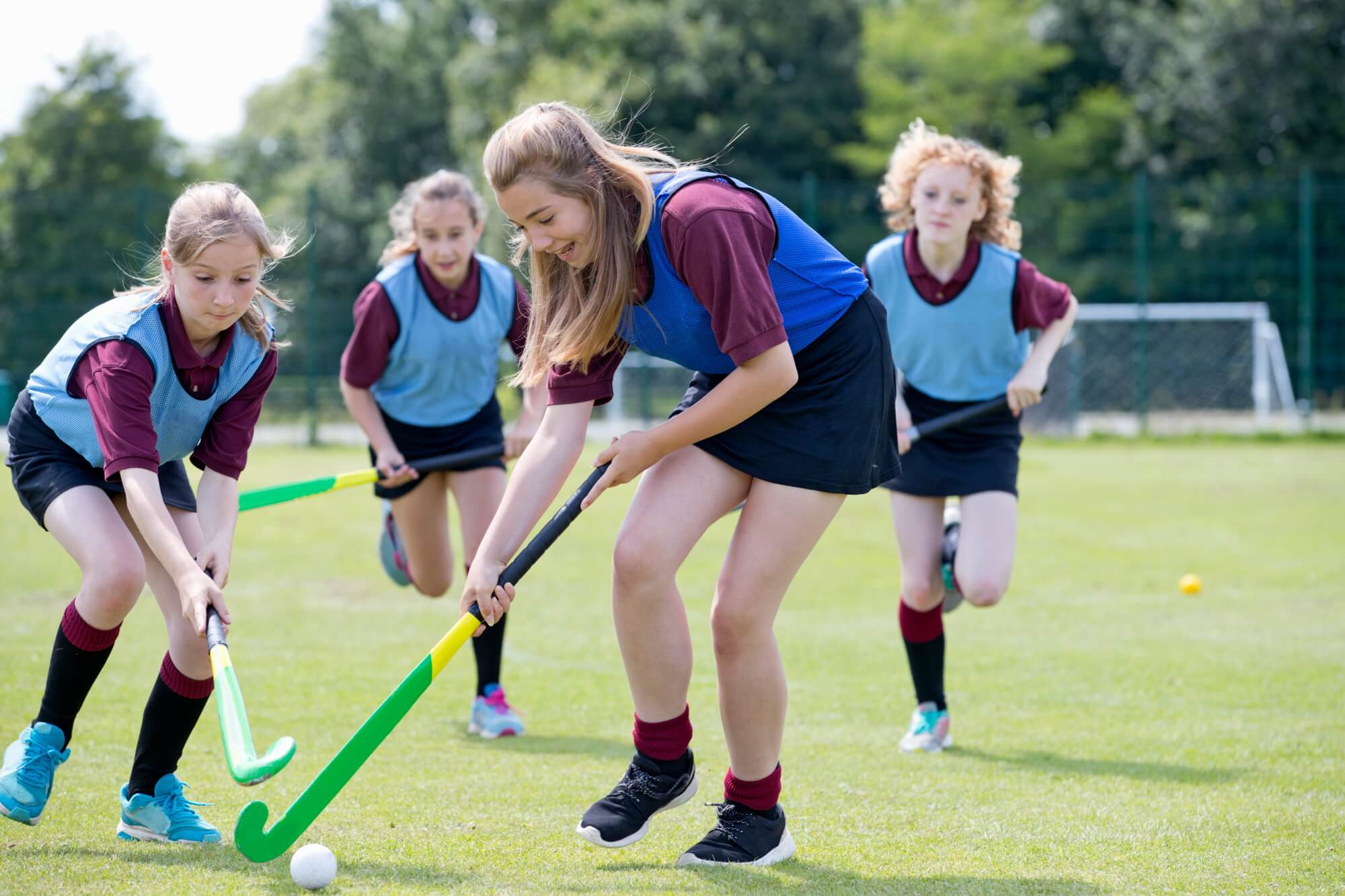
There is an art in knowing the type of question to ask, that challenges specific aspects of the game, but also knowing what question to ask different age groups.
“You will not necessarily ask the same style of question to an Under-9 than you would to an Under-16. Learning this will all come with trial and error and knowing the audience in front of you.
“For example, in an activity of passing between two cones, I will ask ‘how far apart do you want the cones?’ The kids will always go for the hardest option. But they soon figure out that by moving the cones closer together, it decreases their success rate, and getting that bit of success drives their engagement. Then comes the art of the right questions to ask in order to get them to move the cones just far enough apart to challenge them, but not so easy that it becomes boring.”
Or they might use their imagination and decide to change it by putting a ball on top of the cone.
“I will ask them. ‘What are our success criteria?’. ‘Knocking the ball off’. ‘How many times have we knocked it off?’. ‘We haven’t.’ Again, they will discover that the solution is to move the cone further apart.”
Applying the ‘CHANGE IT’ principles help children discover the importance of making their own decisions and the implications of those decisions.
“I might take one person out of a game and say, ‘you are going to go back on in a minute and I want you to change one thing. Whatever you want.’
“It could be that their team isn’t scoring many goals, so they want to make it easier to score. To get the conversation of ideas flowing I will ask them how they think they could do this, and why they want to make it easy for their team to score goals.
“They might opt for making the goal-scoring zone bigger, or using one of the football goals instead.”
Wendy advises playing small-sided games when coaching children hockey – up to a maximum of seven-a-side – because that allows players to have more touches, so everyone gets a slice of the action and engagement levels remain high.
“With a seven-a-side game, particularly the younger age groups, all the players flock around the ball. This is great defensively – the attacker finds it hard to get around the defence – but it makes it very difficult to pass the ball,” says Wendy.
“Even Under-9s will grasp the concept of needing to space out. So, I will ask questions like: How can we do that when your team has the ball? Where will you move to? Where will you aim your pass? So rather than using the words ‘space out’ it focuses on the principles behind this.
“As a coach you can add in pause moments or Matrix moments. Everyone stops where they are, and whichever team is in possession of the ball has three seconds to get into a new part of the playing area.”
To crank up the fun level, Wendy makes use of a hand-held clicker, also known as a tally counter. Then the children pick something they want to keep score of. For example, they might choose to count the number of passes.
“I will tell them, ‘for every pass before you score, that is how many points the goal is worth’, and then get them to count the number of passes their team completes in 10 minutes.
“Then I will increase the challenge by asking them how they can beat that number in the same ten-minute time frame by changing something about the game.”
The children might decide to reduce the number of players in each team, by dividing the 6v6 into two 3v3 games; reduce the size of the playing area; or reduce the specific number of touches each player is allowed to have before passing the ball.
Child-first coaching develops better performers and better people
Wendy believes the golden principles of child-first coaching – voice, choice, and journey – “over-arch and link in with each other”.
For instance, when you give children the freedom to choose, invariably they will not all choose the same thing, and this could result in conflict.
Sport represents the perfect learning environment in which children can work together to think about how to resolve the range of problems and difficult choices they face.
“This is why I love sport, and child-focused sport particularly,” says Wendy. “Sport develops their communication skills, problem-solving skills, teamwork skills, and builds children's resilience by teaching them how to cope with losing or not getting their own way all the time.
All these are transferable skills that can apply to everyday life, where they will also face a multitude of choices, many of them difficult choices. Hockey is the medium I am using to educate them and embed these skills to help them develop holistically on their journey through sport.
My primary objective is not to make them the most amazing hockey player, it is supporting children to enjoy what they are doing, regardless of their ability, to help them become the best person, the best citizen, I possibly can.”
Other resources you may like...
SHARE THE MOVEMENT
Help spread the word by sharing this website with fellow coaches!

